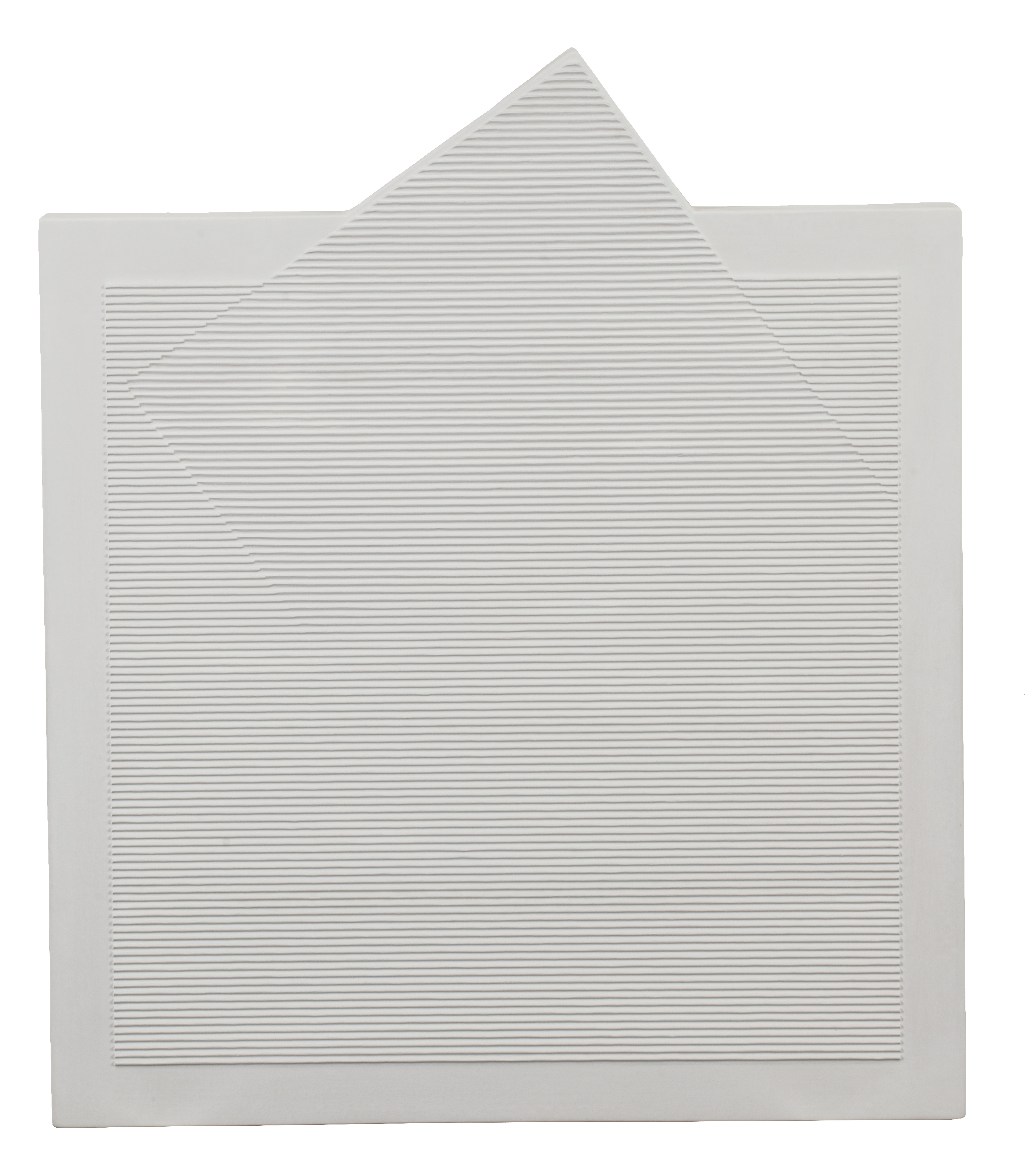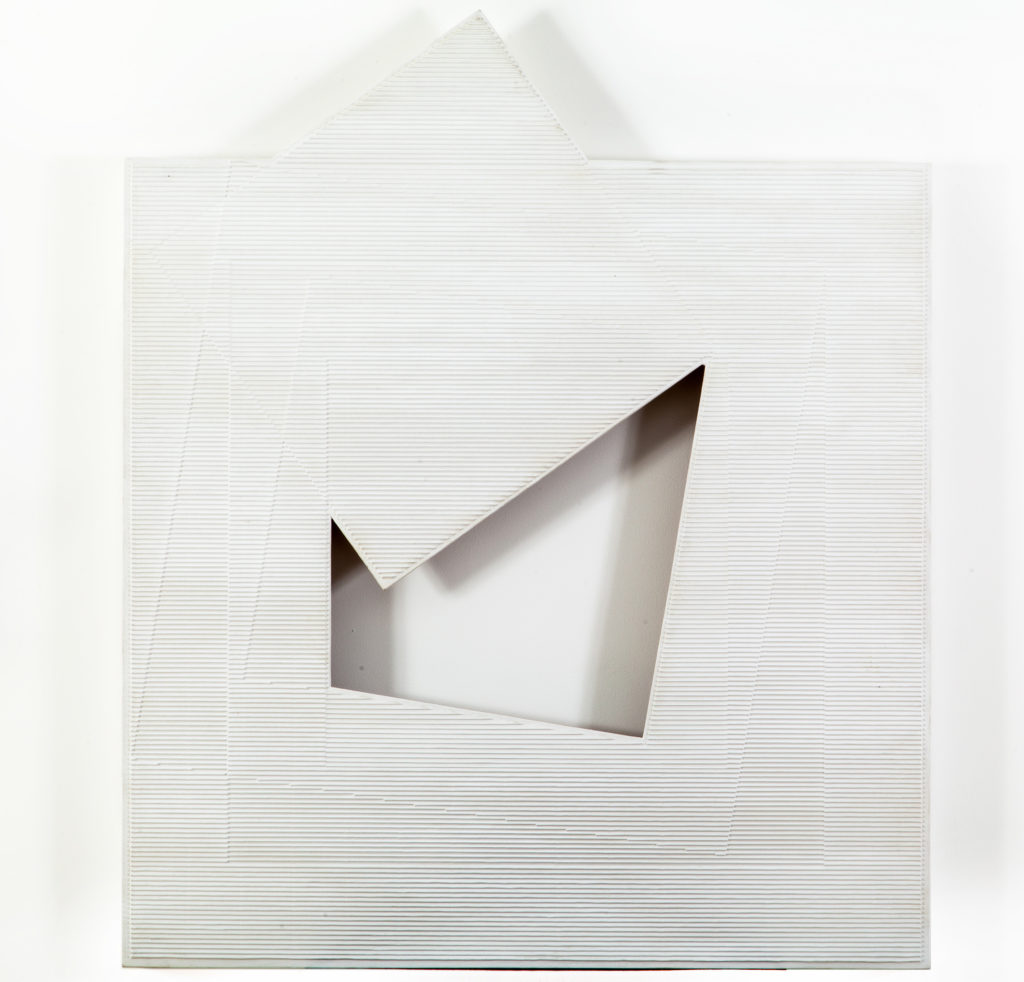Francisco Salazar attended the Escuela de Artes Plsticas y Aplicadas de Caracas and the Facultad de Arquitectura y Urbanismo of the Universidad Central de Venezuela, between the mid-50s and the beginning of the 60s. While still a student he participated in national art exhibitions. Around 1962 Salazar created assemblages and paintings that were influenced by the theories of informalismo. At the Galera G (Caracas, 1963) he exhibited works that emphasized their material quality using white paint. This first stage of experimentation and research culminated in a synthesis of media using corrugated paper and white. From these two elements, Salazar developed a style characterized by the transformation of light by textured planes created by the use of white, black and a broad range of grays which visually changed according to the location and movement of the spectator.
The first results of these experiments were the series Positivo-negativo, which Salazar displayed at the Centro Venezolano Americano (Caracas, 1966) and at the Museo de Bellas Artes (Caracas, 1967). In 1967 he participated at the V Biennial of Young Artists of Paris, where he earned the first prize. Salazar settled in the French capital where he was influenced by the artists in the kinetic art movement. During the second half of the seventies he exhibited frequently in Caracas and Paris.
In 1980 Salazar presented an important one-man show at the Museo de Arte Contemporneo de Caracas called Espacio blanco. By that time, the corrugated paper was no longer the only constituent material of his work as he had added wood supports to create diverse planes of textures, whose combination produced open and irregular forms. He also incorporated the resources of expansion, displacement and integration of the planes that added to the omnipresent transformation, sublimation or even ennobling, in a alchemical sense, of the ordinary material (corrugated cardboard) into a work of art. According to Salazar, the materials transformed light, when “entangled with the structure or spatial order.” It also transformed the spectator, who had to develop a special sensitivity to patiently observe a work that required time for contemplation during which light effects slowly affected the retina. Following this unique type kinetics as his line of research, Salazar presented his work in numerous exhibitions in Europe and America. In 2007 he was honored with a retrospective show entitled El juego de la luz y del espacio (Museo de Arte Acarigua-Araure, Venezuela).

